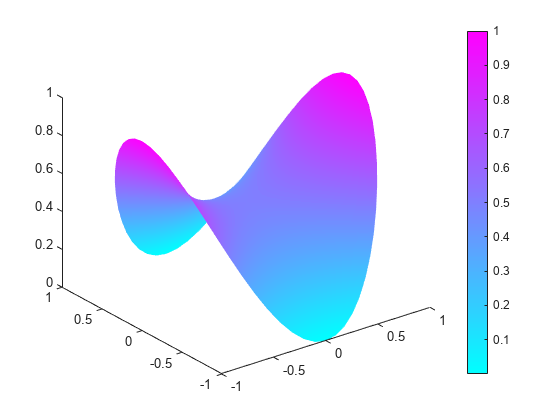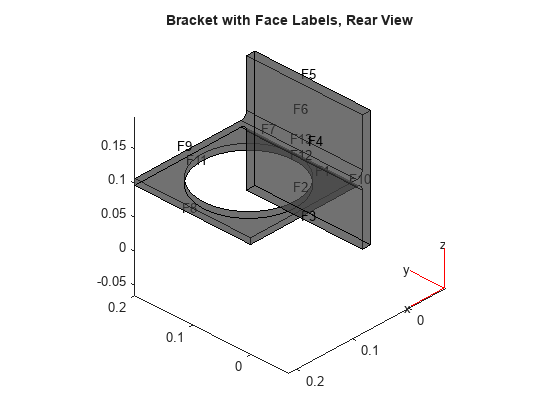The basic idea is to use Gauss-Newton iterations to solve the nonlinear equations. Say you
are trying to solve the equation
r(u) = –∇ ·
(c(u)∇u) +
a(u)u -
f(u) = 0.
In the FEM setting you solve the weak form of r(u) =
0. Set as usual
where x represents a 2-D or 3-D point. Then multiply the
equation by an arbitrary test function ϕi,
integrate on the domain Ω, and use Green's formula and the boundary conditions to
obtain
which has to hold for all indices i.
The residual vector ρ(U) can be easily computed
as
ρ(U) = (K +
M + Q)U –
(F + G)
where the matrices K, M, Q and
the vectors F and G are produced by assembling the
problem
–∇ · (c(U)∇u) +
a(U)u =
f(U).
Assume that you have a guess
U(n) of the solution.
If U(n) is close enough to
the exact solution, an improved approximation
U(n+1) is obtained
by solving the linearized problem
where is a positive number. (It is not necessary that ρ(U) = 0 have a solution even if ρ(u) = 0 has.) In this case, the Gauss-Newton iteration tends to be the minimizer
of the residual, i.e., the solution of minU
.
It is well known that for sufficiently small
and
is called a descent direction for , where is the L2-norm. The iteration is
where ≤ 1 is chosen as large as possible such that the step has a reasonable
descent.
The Gauss-Newton method is local, and convergence is assured only
when U(0) is close enough to the solution. In
general, the first guess may be outside the region of convergence. To improve convergence
from bad initial guesses, a damping strategy is implemented for
choosing α, the Armijo-Goldstein line search. It chooses the largest
damping coefficient α out of the sequence 1, 1/2, 1/4, . . . such that the following
inequality holds:
which guarantees a reduction of the residual norm by at least 1 – /2. Each step of the line-search algorithm requires an evaluation of the
residual .
An important point of this strategy is that when
U(n) approaches the
solution, then →1 and thus the convergence rate increases. If there is a solution to ρ(U) = 0, the scheme ultimately recovers the quadratic convergence rate of the
standard Newton iteration.
Closely related to the preceding problem is the choice of the initial guess
U(0). By default, the solver sets
U(0) and then assembles the FEM matrices
K and F and computes
The damped Gauss-Newton iteration is then started with
U(1), which should be a better guess than
U(0). If the boundary conditions do not
depend on the solution u, then
U(1) satisfies them even if
U(0) does not. Furthermore, if the
equation is linear, then U(1) is the exact FEM
solution and the solver does not enter the Gauss-Newton loop.
There are situations where U(0) = 0 makes no sense or convergence is impossible.
In some situations you may already have a good approximation and the nonlinear solver can
be started with it, avoiding the slow convergence regime. This idea is used in the adaptive
mesh generator. It computes a solution on a mesh, evaluates the error, and may refine certain triangles. The
interpolant of is a very good starting guess for the solution on the refined mesh.
In general the exact Jacobian
is not available. Approximation of Jn by finite
differences in the following way is expensive but feasible. The ith
column of Jn can be approximated by
which implies the assembling of the FEM matrices for the triangles containing grid point
i. A very simple approximation to
Jn, which gives a fixed point iteration, is
also possible as follows. Essentially, for a given
U(n), compute the
FEM matrices K and F and set
This is equivalent to approximating the Jacobian with the stiffness matrix. Indeed, since
ρ(U(n))
= KU(n) –
F, putting Jn =
K yields
In many cases the convergence rate is slow, but the cost of each iteration is
cheap.
The Partial Differential Equation Toolbox™ nonlinear solver also provides for a compromise between the two extremes. To
compute the derivative of the mapping U→KU, proceed as
follows. The a term has been omitted for clarity, but appears again in
the final result.
The first integral term is nothing more than
Ki,j.
The second term is “lumped,” i.e., replaced by a diagonal matrix that contains the row
sums. Since
Σjϕj
= 1, the second term is approximated by
which is the ith component of
K(c')U,
where K(c') is the
stiffness matrix associated with the coefficient ∂c/∂u
rather than c. The same reasoning can be applied to the derivative of the
mapping U→MU. The derivative of the mapping
U→ –F is exactly
which is the mass matrix associated with the coefficient
∂f/∂u. Thus the Jacobian of the residual
ρ(U) is approximated by
where the differentiation is with respect to u, K
and M designate stiffness and mass matrices, and their indices designate
the coefficients with respect to which they are assembled. At each Gauss-Newton iteration,
the nonlinear solver assembles the matrices corresponding to the equations
and then produces the approximate Jacobian. The differentiations of the coefficients are
done numerically.
In the general setting of elliptic systems, the boundary conditions are appended to the
stiffness matrix to form the full linear system:
where the coefficients of and may depend on the solution . The “lumped” approach approximates the derivative mapping of the residual
by
The nonlinearities of the boundary conditions and the dependencies of the coefficients on
the derivatives of are not properly linearized by this scheme. When such nonlinearities are
strong, the scheme reduces to the fix-point iteration and may converge slowly or not at all.
When the boundary conditions are linear, they do not affect the convergence properties of
the iteration schemes. In the Neumann case they are invisible (H is an
empty matrix) and in the Dirichlet case they merely state that the residual is zero on the
corresponding boundary points.





